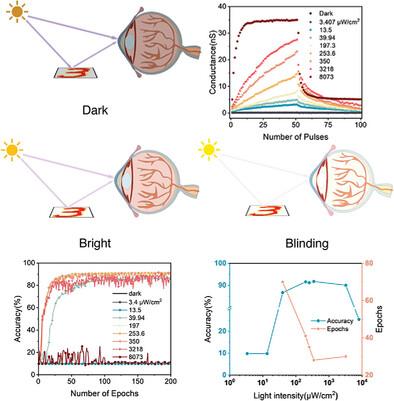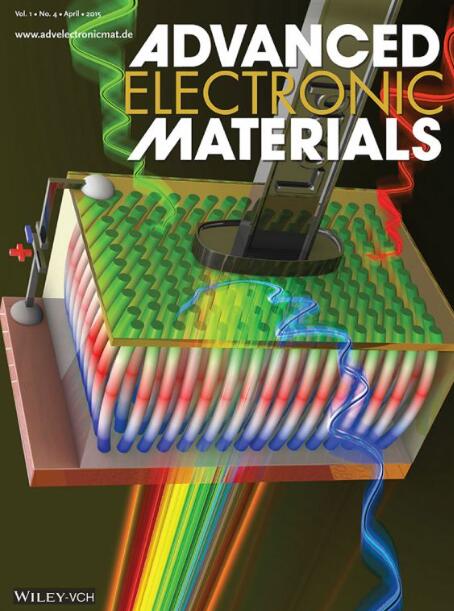基于有机异质结光电突触晶体管的增强型仿生人工视觉系统
IF 5.3
2区 材料科学
Q2 MATERIALS SCIENCE, MULTIDISCIPLINARY
引用次数: 0
摘要
受人眼启发的人工视觉系统在人工智能领域具有巨大潜力。光电突触将图像感知、处理和记忆集成在一个设备中,提供了前景广阔的解决方案。在不同的光照条件下,人眼对物体的识别准确率各不相同。因此,需要一种更仿生的视觉系统,以更好地适应实际应用场景。本文提出了一种基于有机异质结的光电突触晶体管(OHOST),以增强仿生人工视觉系统。该器件利用核心多壳量子点(QDs)出色的载流子捕获能力和异质结界面的高激子解离效率,在不同光强度下实现了与人眼近似的识别能力。在最佳光照强度下,美国国家标准与技术研究院(MNIST)数据集的识别准确率可达 91.52%。然而,在低光照强度和高光照强度下,准确率都会下降到较低水平。这项工作将人工视觉系统的发展推向了更高的仿生水平。本文章由计算机程序翻译,如有差异,请以英文原文为准。

Toward Enhanced Biomimetic Artificial Visual Systems Based on Organic Heterojunction Optoelectronic Synaptic Transistors
Artificial visual systems, inspired by the human eye, hold significant potential in artificial intelligence. Optoelectronic synapses, integrating image perception, processing, and memory in a single device, offer promising solutions. The human eye exhibits different recognition accuracies for objects under varying light conditions. Therefore, a more biomimetic visual system is needed to better fit actual application scenarios. Here, an organic heterojunction-based optoelectronic synaptic transistor (OHOST) is proposed to enhance biomimetic artificial visual systems. By utilizing the excellent carrier capture ability of core-multi-shell quantum dots (QDs) and the high exciton dissociation efficiency of heterojunction interfaces, the device achieves a recognition capability under different light intensities closely resembling that of the human eye. Under optimal light intensity, the recognition accuracy for the modified national institute of standards and technology (MNIST) dataset can reach 91.52%. Nevertheless, under both low and high light intensities, the accuracy drops to a low level. This work pushes the development of artificial visual systems toward higher levels of biomimicry.
求助全文
通过发布文献求助,成功后即可免费获取论文全文。
去求助
来源期刊

Advanced Electronic Materials
NANOSCIENCE & NANOTECHNOLOGYMATERIALS SCIE-MATERIALS SCIENCE, MULTIDISCIPLINARY
CiteScore
11.00
自引率
3.20%
发文量
433
期刊介绍:
Advanced Electronic Materials is an interdisciplinary forum for peer-reviewed, high-quality, high-impact research in the fields of materials science, physics, and engineering of electronic and magnetic materials. It includes research on physics and physical properties of electronic and magnetic materials, spintronics, electronics, device physics and engineering, micro- and nano-electromechanical systems, and organic electronics, in addition to fundamental research.
 求助内容:
求助内容: 应助结果提醒方式:
应助结果提醒方式:


